Thumb grips and hoods can be controversial, especially when conversation turns to the grips. Many photographers hate them. Others, including me, love them. Yet, original equipment hoods and grips from camera manufacturers can be eye-wateringly expensive. Why is this, and are the cheaper alternatives worth having?
It’s a question Leica owners, in particular, ask. I’ve heard all the arguments: If you are going to spend £8,000 on a camera, don’t festoon it with cheap accessories. Go for the manufacturer’s accessory because it will be better quality. We are all full of justification for our actions, yet occasionally, we are wrong.
Reluctant
Even well-heeled Leica aficionados, including the odd lawyer and the occasional dentist, blanch at the thought of spending a couple of hundred on a thumb grip. Or, for the matter, on a circular hood for the Q3. Why not, then, ignore the manufacturers’ offerings and plump for a cheapskate offering from an internet store?
Reluctant they may be, but ultimately many Leica owners end up spending the high price on a genuine accessory “to be on the safe side”. What happens if the Amazon substitute doesn’t fit, or is made from reinforced cardboard? Will people laugh at me?
Questions
These are questions we have all asked. And I am no paragon of sensibleness, having spent £200 on the Leica round vented hood for my Q3 (which has now migrated successfully to the Q3 43). I now think it was (probably) an over-priced bauble.
Yes, I know I can get something similar from a third-party supplier at under a quarter of the cost. But I had a new camera, and I thought I’d treat it to something from the candy store.
Hoods and thumb grips, the subject of this discussion, are but a sample of the types of gewgaws you can fit to any camera these days. But they are the most common options, and it’s worth having a closer look.
Robbin’ hoods?
Let’s see how they all stack up. Are they any good, or are they just daylight robbery? First, though, the genuine article… from Leica.
Leica circular hood for Q3 (£205)
This product from the Leica stable, encouragingly inscribed “Leica Camera Wetzlar” and “Made in Portugal” is the bee’s knees of hooding. In the USA it’s a shade, but I do love the German “Gegenlichtblende”1 or “shade-against-light”.
It is a substantial investment of (currently) £205 in the UK ($230| €235, for black or silver. But there is a brass option for slightly more (with matching thumb grip…). The hood is perfectly constructed and screws securely to the lens once you’ve removed the keeper ring. Furthermore, it allows a filter to be screwed inside from the front. It is 2cm deep and has venting, although I am not sure what that achieves, apart from a weight saving.
I don’t like the standard squarish hood supplied with the Q lens, and I think the round accessory looks much better on the camera and offers more protection against knocks and denting. The standard offering is no doubt technically more competent, but I prefer the retro look.
This expensive bauble has served on two cameras and has worked flawlessly. It has saved the end of the lens on several occasions, and bears the battle scars with honour.
Nonetheless, this Leica Q3 hood is the only example of a genuine manufacturer option in this article. I shall now move down market: in some cases to the bottom.
Haoge circular hood for Q3 (£29)
Since I own Leica’s hood, I haven’t investigated third-party equivalents. There are many of them out there. But my choice would be the Haoge LH-LQ metal lens hood. This is because I have been impressed with other Haoge products, which I will cover later.
This hood appears to be identical to Leica’s £205 offering and works in the same way, screwing on and offering an internal thread for a filter (thus avoiding the extra size of “double heading” filter and hood).
I’ve heard good things about Haoge from readers, and I think this is the one to go for. The good thing about modern trading is that you can order it, inspect it and fit it to your Q3/Q3 43. If you aren’t satisfied, return it.
There are scores of similar 49mm hoods which will fit a Leica Q3, but this one has the right price (cheapish), is of sturdy build and, to me, looks identical. And, to its credit, it isn’t festooned with white engravings. You can pretend it’s made by Leica in Portugal.
Buy it here
JJC lens hood for Leica D-Lux 8 (£12.99)
I bet you never thought the Leica D-Lux 8 (or any of its Leica and Lumix predecessors) needed a hood.
You are probably right to be sceptical. But this little number looks so cute that I couldn’t resist ordering it. After all, at under £13, the JJC LH-43LX100 Lens hood is a roaring bargain.
It was a research product, and I came to it after one abortive dalliance with a little £8 doozie, the Patikil 43mm lens hood “for Nikon, FujiFilm, Pentax and Leica”.
Sounded good, and it looked good on the D-Lux, if a touch on the deep side. This turned out to be its undoing, however. It caused severe vignetting, and I was soon packing it off for a refund. Caveat emptor, but at least I got a refund.
The JJC was a much better bet, and I was convinced when I saw the engraved “LX100” on the underside of the shade. Unlike the Haoge, JJC hoods usually have white engraved model designations. Call me a snob, but I’ll take white engraving if it says Leica; otherwise, anonymity is more desirable.
As with the Haoge Q3 hood above, it screws into the filter thread and has an internal 43mm thread to take the filter. Again, no doubling up.
Vignetting banished
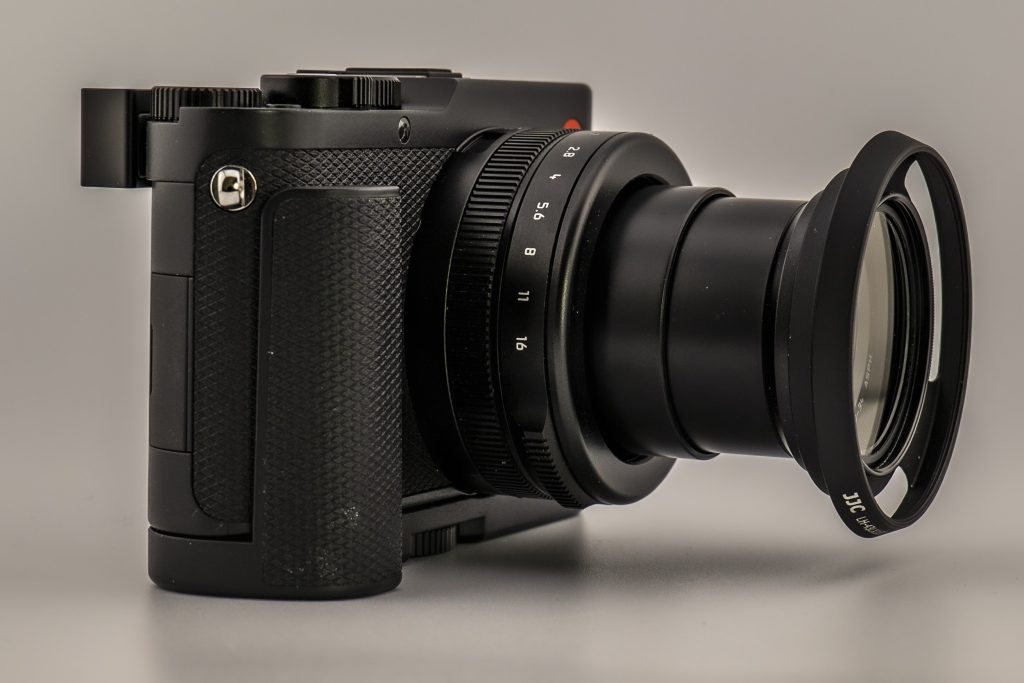
The specification assured me that there is no vignetting, and it is right. The JJC vented hood is narrower than the generic 43mm hood, but it does the job.
But does the D-Lux 8 need a hood? I am not convinced, but what I do know is that this accessory looks good (cute, I said earlier). It improves the look of the camera, helps to protect the lens from knocks and does no harm. It can even stop flare occasionally.
A big thumbs up to JJC for this number. It’s well-made, fits perfectly and is something every D-Lux owner should consider.
FujiFilm X100VI, odd one out
The X100VI is difficult to cater for, and that’s why I went for the genuine factory hood. It is necessary to buy the official adaptor and hood, which come as a kit for £69. It is a great solution and, all things considered, not so far removed from the cost of third-party hoods.
But beware. This hood has a bayonet fixing and (my version at least) is loose. It fell off repeatedly until I added a small strip of black tape to secure it to the adapter. See the tape peering through the bottom vent in the picture below. This isn’t a big deal since it isn’t visible in normal use.
Fujifilm GFX100RF
Here’s something new, and something I found in my accessory drawer (the hood, not the camera). The arrival at Macfilos Towers of the latest medium-format fixed-lens “compact”, the Fujifilm GFX100RF, was an occasion of some excitement.
The RF shares a quirk with the smaller APS-C X100VI: there is no filter thread to allow the fitting of a protective UV filter or a third-party hood. You need an adapter, and you really do need it because fitting a filter is the only way to weatherproof the lens.
Fortunately, in the case of the RF, Fujifilm supplies the adapter, filter and huge square hood in the box. Sadly, adding these accessories transforms the lens from a 30mm pancake to a 60mm Victoria sponge. The adapter itself provides some protection from shade, and screwing in a filter will be all that most photographers need, unless they are working frequently in strong sunlight.
After trying out the supplied voluminous hood, I came across a third-party 49mm vented hood in a box of old accessories. It fits perfectly. The supplied filter can be mounted inside this hood to minimise depth. As mentioned, this particular hood came from my Aladdin’s cave and has no markings. However, many similar hoods with a 49mm thread are available, and I cannot recommend any one in particular.
So far, I am not convinced this hood does anything useful, although it looks impressive, and it will help protect the lens from damage.
Hoodclusion
There you have it. I do not think you can go far wrong with one of these third-party hoods.
Before shelling out for the genuine manufacturer’s expensive option, order a third-party hood and try it out. You know it makes sense.
If you don’t like the third-party accessory, send it back, and spend up to 18 times as much on the genuine article. Then see if you can tell the difference.
Getting a grip
Now, this is a more complex issue. How to grip the camera. Should you go for the full Monty, a screw-on handgrip? Or settle for a thumb grip/rest? They are becoming increasingly popular, and I make no secret of my attachment to them.
I’ve been using thumb grips on cameras for over 15 years and believe that they do improve handling. The only grip I’ve been doubtful about was the huge, over-engineered crane designed for the Leica SL. It does its job well, but the curved bit is so prominent that it continually prods into the chest when carrying the camera around the neck.
There are many ways of improving the grip on Leica cameras, which lack the contoured support found on most competitors’ products. The M and the Q are clear candidates for some outside assistance. This can take the form of a thumb grip, but handgrips are also popular. And even a leather half case can improve handling.
Third-party all the way
Here, though, I’m concentrating on thumb grips. Unlike my extravagance with the Leica hood, I have not been prepared to spend a couple of hundred on a thumb rest for my current M, Q or D-Lux 8 models.
Instead, I’ve trodden the Amazon boards and found suitable and practical grips for all my cameras. In this list, I include the FujiFilm X100VI and also the little Ricoh GR III which, surprisingly, benefits enormously from more grip.
All have been satisfactory, but one is outstanding.
Curiously, third-party thumb grips have risen in price. They are no longer £12 or £24. Inflation has struck. Nevertheless, they are still cheap compared with the “real thing”.
JJC thumb grip for D-Lux 8 (£39.99)
This is a substantial, solid grip which fits the camera perfectly. It slides firmly into the hot shoe, with no danger of it falling off (as I have found with some similar devices in the past).
In common with all good grips, it features silicone pads to avoid scratching the camera.
There are cheaper third-party grips on the market, but I can recommend this one. Again, as with the JJC hood, it enhances the camera, both visually and operationally.
The arm of the grip runs above the two function buttons and acts as a protection against inadvertent operation. Despite this, the buttons are still easy to access and there are no negative implications.
Buy it here
JJC thumb grip for Ricoh GRIII (£14.99)
The little Ricoh GRIII (the professional photographer’s best kept secret vice) trades on its pocketability.
Aside from the Sony RX100 and a few other small-sensor cameras, the GRIII is the handiest little camera (and APS-C at that) for carrying around on days when you don’t want to be burdened by a larger unit.
Yet, if there is one camera that really does need a thumb grip, it is the Ricoh GRIII. It’s a tiny and light camera, but lacks a firm grip.
This little thumb grip transforms the handling. With the thumb on the grip and the fingers curled around the small front bump, the camera is extremely comfortable in the hand. It can be carried securely, with a lightweight strap around the wrist for security, and is instantly ready for action.
I figured that a thumb grip wouldn’t harm the Ricoh’s pocket credentials, and I was right. But it does improve handling.
Because of the compact dimensions, with the screen housing just 5mm below the top plate, this JJC grip is much more slender than the others we are looking at here.
It’s a spindly affair, and the thumb bit rises 9mm above the top plate. But the power button, mode dial and shutter release are all unimpeded and accessible. It should also fit the Ricoh GRIIIx.
Buy it here
Wait, there’s more
There are two further inexpensive accessories for the GRIII which you can see in the above pictures. First is the Haoge red keeper ring (which covers the connector used if you wish to add the accessory lenses). These rings fall off all the time and cost £29.99 from Ricoh. The Haoge replacement is £15.99 and is available in various colours, including the standard black.
This is another item that I can thoroughly recommend. But wherever you buy your replacement keeper ring, please add a small tab of black sticky tape to the bottom to help prevent it from falling off.
Buy it here
In addition, you will see a thin UV filter which perfectly complements the Ricoh GRIII and helps prevent dust ingress. This product, from K&F, costs £14.99. There is no filter thread on the GR models, so K&F have an ingenious method of mounting.
The filter comes with two adhesive rings (one spare) to fix the filter to the front of the lens. I had it installed in seconds, perfectly concentric, and it does offer protection for the lens. The pack includes two split-rings which can be used to insert a thread behind the filter and pull if off when necessary. However, since this product involves adhesive, you should make sure you are happy with the idea before installing the filter. I have had no problems (but then, I haven’t tried to remove it) and can recommend the accessory.
Buy it here
Haoge thumb grip for Leica M10/M11 (£35.99)
Here is another superb product from Haoge, which fits my M11 with precision.
To avoid the camera’s built-in thumb bump, accessory thumb grips for the M10/11 are shorter than other examples in this review.
This example fits firmly into the hotshoe and is thoroughly practical, vastly improving the grip on the rangefinder body. Used with my Arte di Mano half case, with its small finger bump, the thumb grip enhances the usability of the M11-D.
It does hide the manufacturer’s “Made in Germany” engraving on the back of the top plate and, annoyingly, leaves the white M visible. But this is pure nitpicking. In all other respects, this is a great alternative to the more expensive OEM thumb grips.
Aluminium or brass?
As with all the grips reviewed here, this grip for the M11 is made from anodised aluminium. There are alternatives made from brass, but they cost almost as much as the manufacturers’ accessories.
None is as satisfying in look and feel as the original Thumbs Up from Tim Isaac of MatchTechnical. These grips are made from solid brass and offer a touch of luxury. If you are willing to spend more, the Thumbs Up is still the best choice and a perfect alternative to OEM grips.
Unlike other cameras discussed here, the Leica M has one peculiarity which makes thumb grips less appealing. If you regularly use a Visoflex 2 or optical viewfinder, constantly removing the thumb grip can be a chore. On the other hand, if you use the rangefinder exclusively, then this thumb grip will be a steady companion.
JJC thumb grip for FujiFilm X100VI (£16.99)
Fujifilm isn’t Leica. But I regard the X100VI as an honorary Leica. I’m including this in the collection because I own the ‘Six and thought you’d be interested.
This is another entrant from JJC. It is very similar in appearance and function to the Ricoh GRIII grip (above). Like the Ricoh grip, it is thinner than usual to avoid the two function buttons and the rear thumb wheel. They are all fully accessible with the grip attached.
Although the X100VI has a shallow front grip, the thumb grip does improve the handling of the camera without adding bulk. Again, I can recommend it for X100 users. Note that this model also fits F and V models as well as the FujiFilm X-E4 and X-E3.
Buy it here
Haoge thumb grip for Leica Q3/Q3 43 (£65.83)
I had high expectations of this grip after reading two glowing reports in the Macfilos comments section. However, I wavered at the price. At £65.83 (now £58.88 as of 27 April 2025), it is twice the cost of similar JJC grips, and nearly twice as much as the Haoge M11 grip (above).
The fact that it was to be sent from overseas (I imagined China) was another slight disincentive. I do like to get my toys the next day.
Eventually, I plucked up the courage to order. To my surprise, the grip arrived in three days from the USA, not China. However, the plain cardboard box announced “Made in China” (which is where the other products in this review originate, I imagine). It must have had a long journey.
Surprises galore
That was the first surprise. The second was that I was not prepared for the great design and impeccable quality of this Q3 accessory.
It appears to be identical to Leica’s £205 “thumb support”. As with the Leica grip, the Haoge is unusual in extending to the left of the hotshoe. All the other grips in this review are cut off at the end of the slot.
Immediately I noticed that the extension, which is curved to fit comfortably against the viewfinder housing, covers the diopter adjustment wheel.
Surely, some mistake, I thought at first. Then I realised that it serves to protect the wheel from inadvertent misalignment, something which can be a problem on some cameras.
If you are the only person using the Q, there is no reason to remove the thumb grip. What a good idea, and it looks so good.
Yet more features
There are two other outstanding features that make this the best budget thumb grip on the market, and both mirror Leica practice with the official grip.
First, the thumb extension is ribbed (unlike any of the other products mentioned here) and this makes a huge difference. This simple improvement doubles the effectiveness of the grip and creates an outstanding, secure way of holding the camera steady.
The second feature is the way in which the function buttons have been reproduced on the outside of the grip arm.
Again, this is identical to Leica’s practice. The two buttons, which push through to activate the camera function buttons, are slightly raised and thus easy to find. However, they work better than the buttons on the naked camera.
The flush function buttons on the back of the top plate of the Q3 are sometimes difficult to locate and use. All this changes thanks to the Haoge grip. The buttons on the grip are slightly raised and thus easy to find by touch. And the operation is smooth and precise. You lose nothing by covering the Q3’s controls in this way.
The fit and finish of this grip is exceptional. While I have not been able to compare the grip with the genuine Leica article, I find it difficult to believe that Leica’s grip can do the job any better.
This £66 Haoge grip is a terrific product and complements my Q3 43 perfectly.
Free screen protectors
And did I mention that the Haoge grip came with TWO glass screen protectors for the Q3 43? That was unexpected but welcome since I hadn’t got around to buying one. The screen of my Q3 43 was soon protected at no additional cost.
You don’t get any freebies with the Leica thumb support, although you do have the option of ordering it in silver and gold finishes instead of plain old black.
I like the Haoge grip immensely and do not feel I am missing anything by foregoing the Leica grip. Operationally, the Haoge grip is the best thumb grip I have ever used.
As usual, though, tastes differ. Buy it for sampling and, if you are not happy, you can return it.
Buy it here
Gripping conclusion
After playing the market, I am happy to recommend any of the featured grips. If you like thumb grips, you cannot fail to be happy with these products. Despite the low price, the quality and operational differences between third-party and first-party products are minimal, even if they exist.
I have mentioned two manufacturers, Haoge and JJC, and their products are impressive. But there are dozens, if not hundreds, of third-party grips out there, some costing even less.
Note that the links to Amazon in this article, if used for purchase, will provide a tiny commission to help with Macfilos running costs. This site is a non-profit, fully independent operation. We bought all the equipment featured in this article and have not relied on review copies.
Prices: Normally, we try to convert prices into three currencies, GB pound, US dollar and euro. In this case, with prices fluctuating on Amazon, it became complicated to check equivalent prices. The UK prices quoted should act as a ballpark figure and are probably very similar in all three currencies.
Make a donation to help with our running costs
Did you know that Macfilos is run by five photography enthusiasts based in the UK, USA and Europe? We cover all the substantial costs of running the site, and we do not carry advertising because it spoils readers’ enjoyment. Every amount, however small, will be appreciated, and we will write to acknowledge your generosity.
- In German, the 100 per cent correct term is Streulichtblende because what it does is help against stray light, while it can’t prevent direct contre-jour light (“Gegenlicht”) falling onto the lens. But Jörg-Peter Rau thinks it’s only Zeiss who use this correct terminology) ↩︎
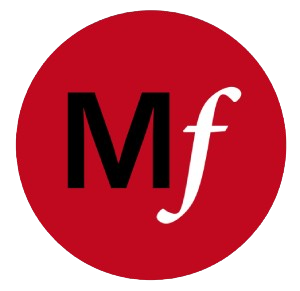
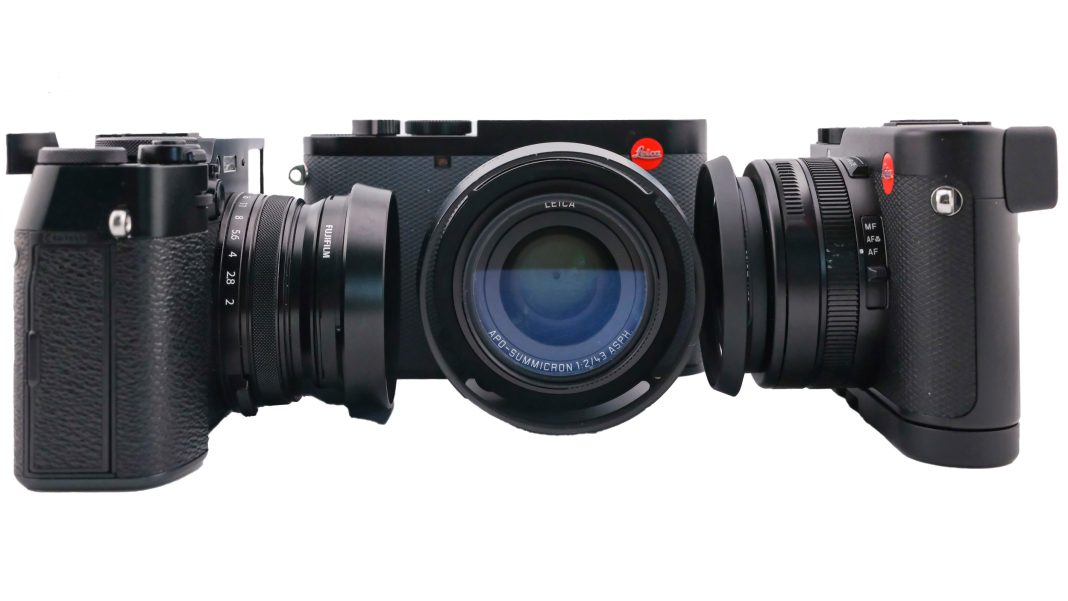
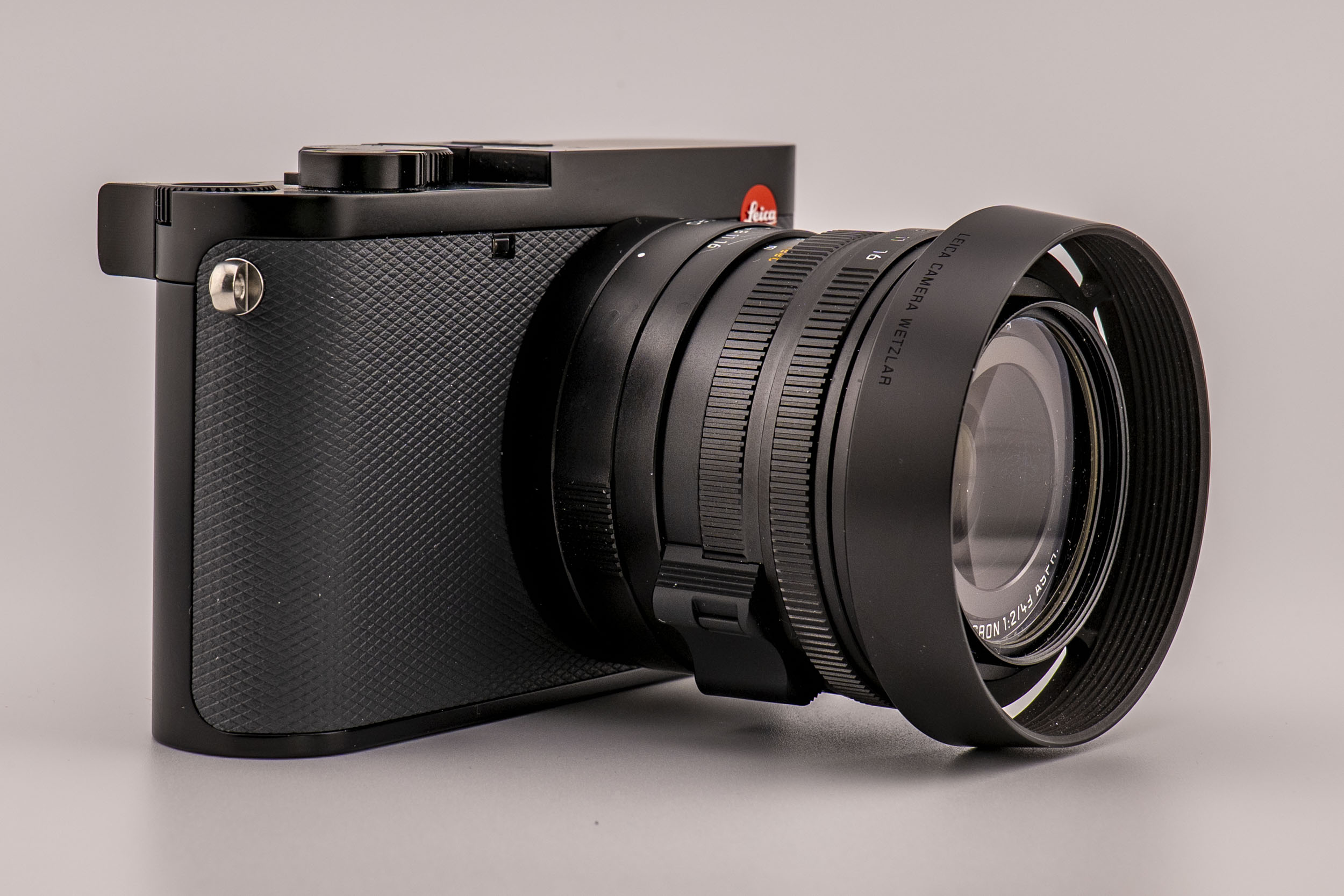
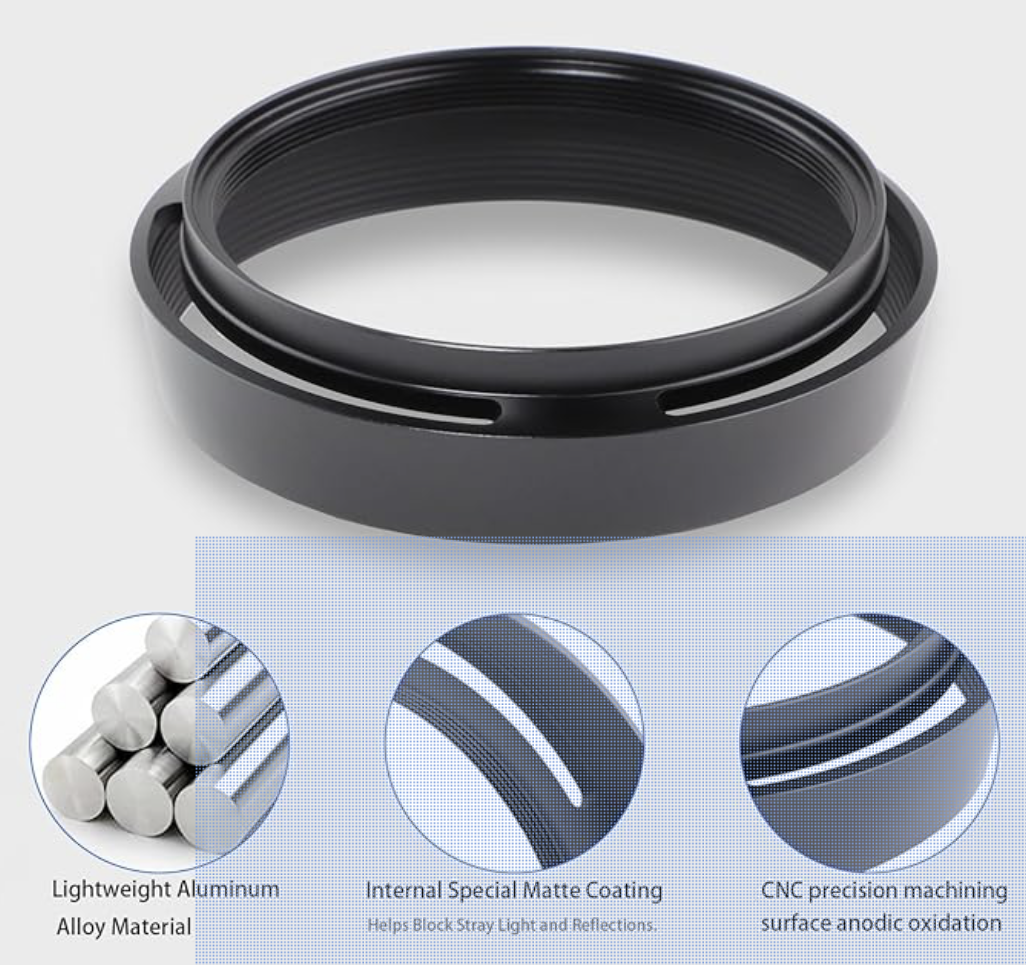
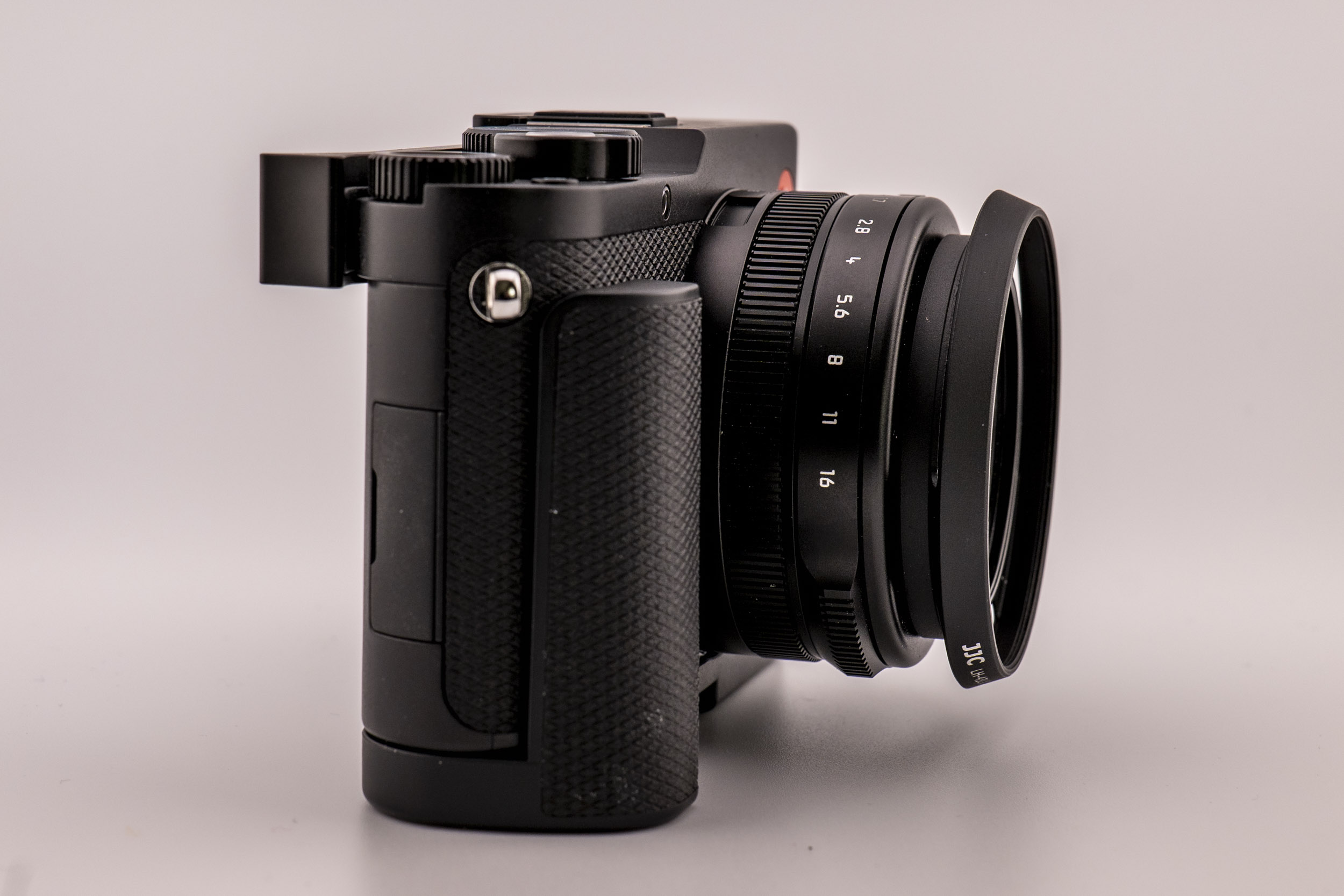
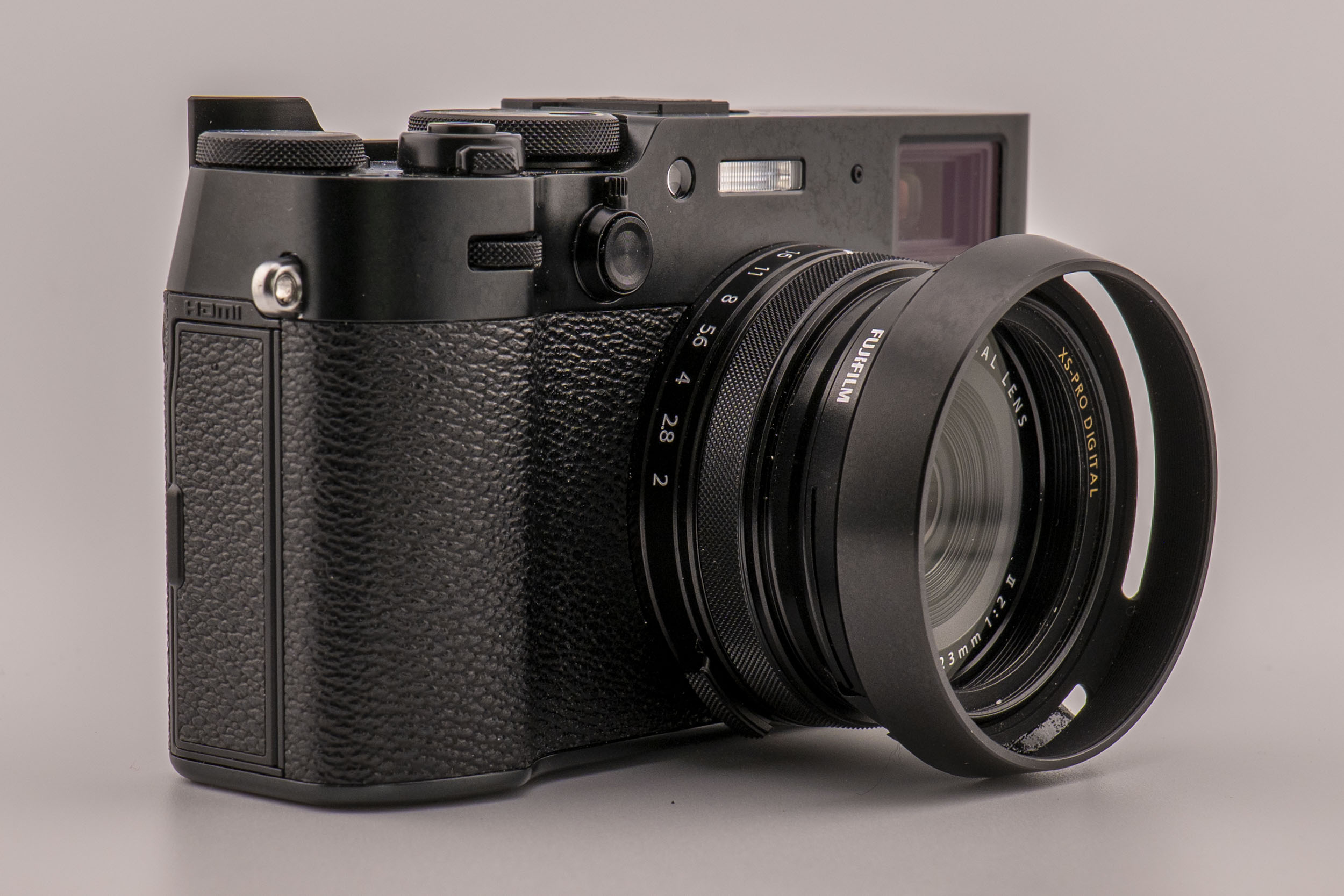
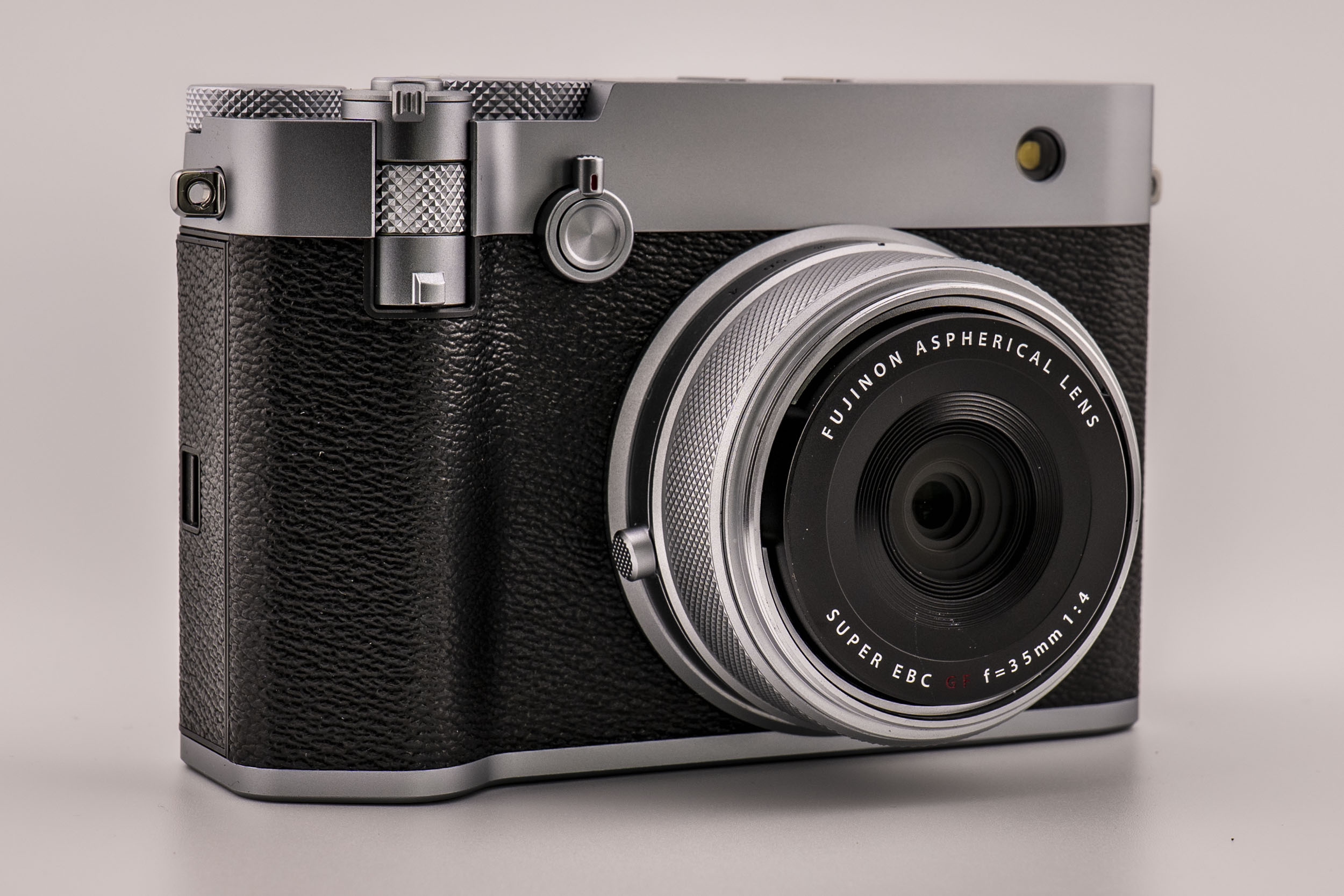
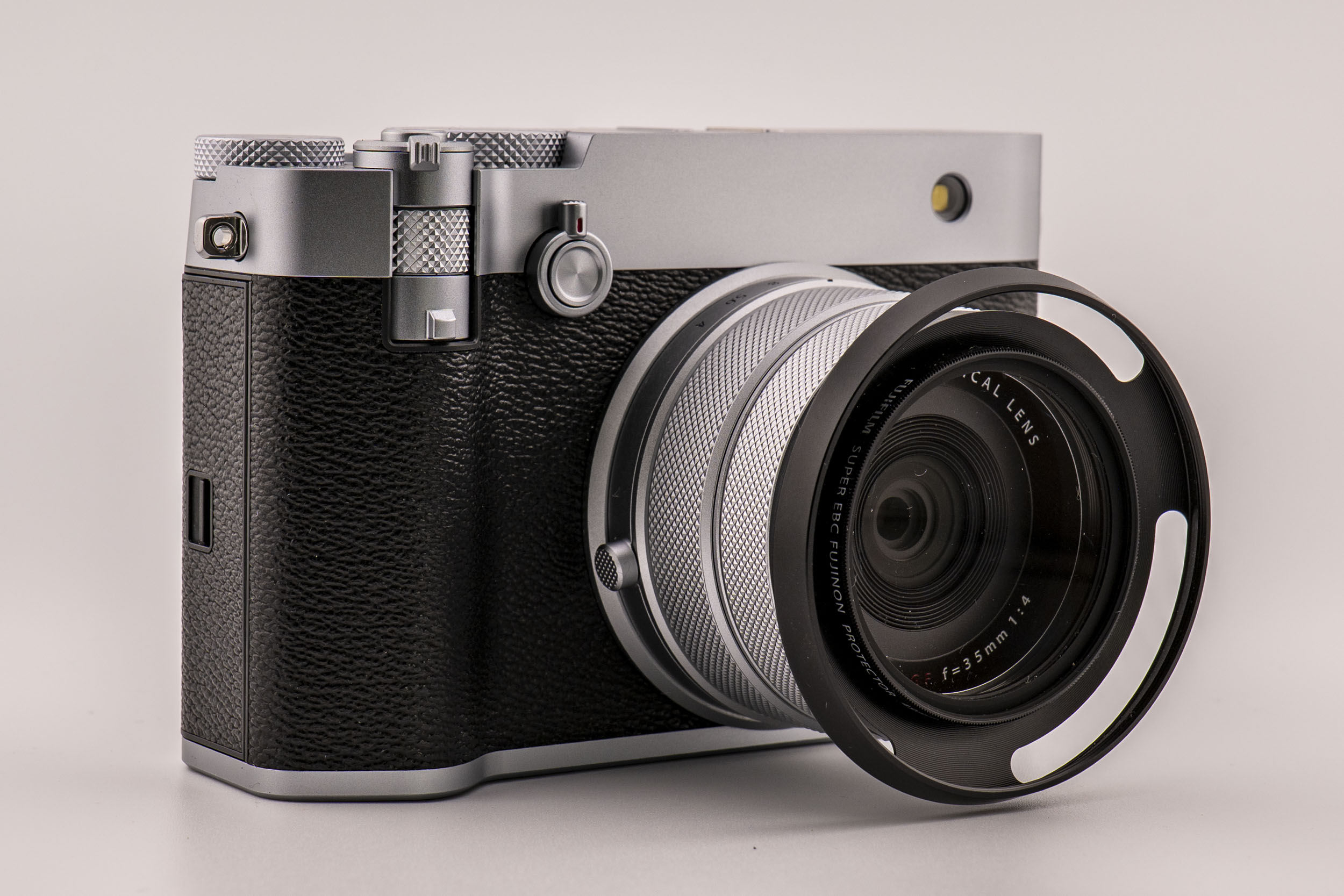
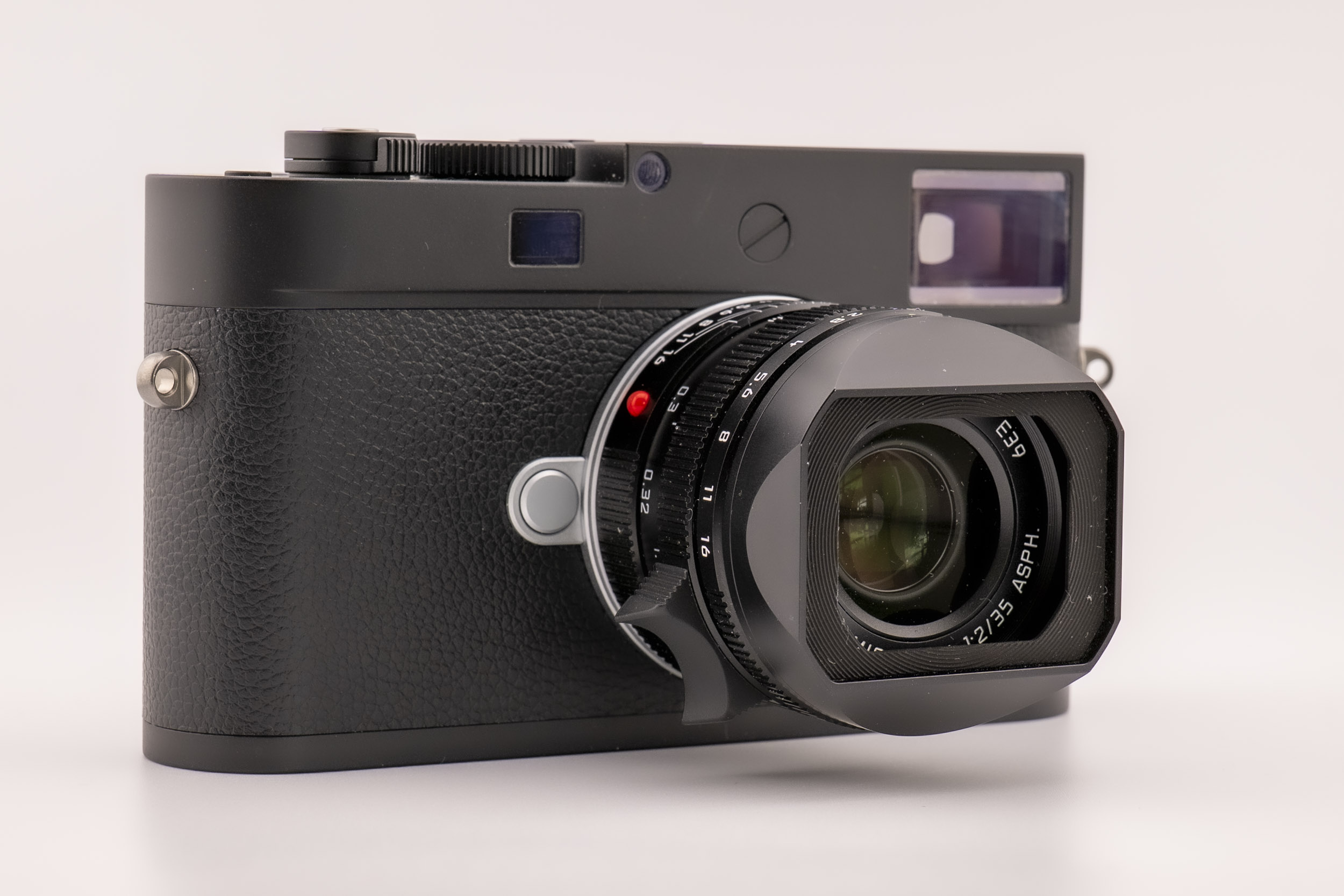
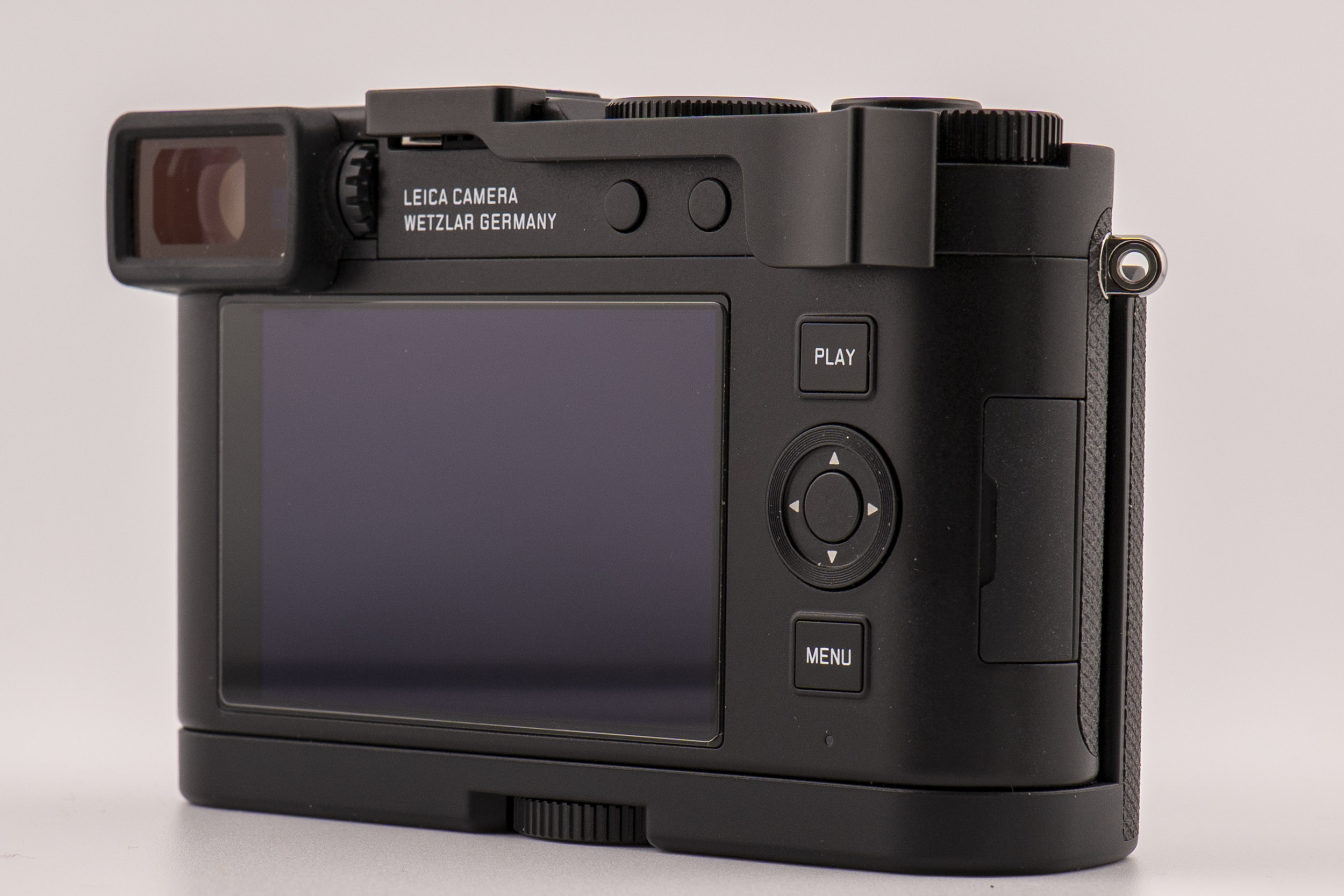
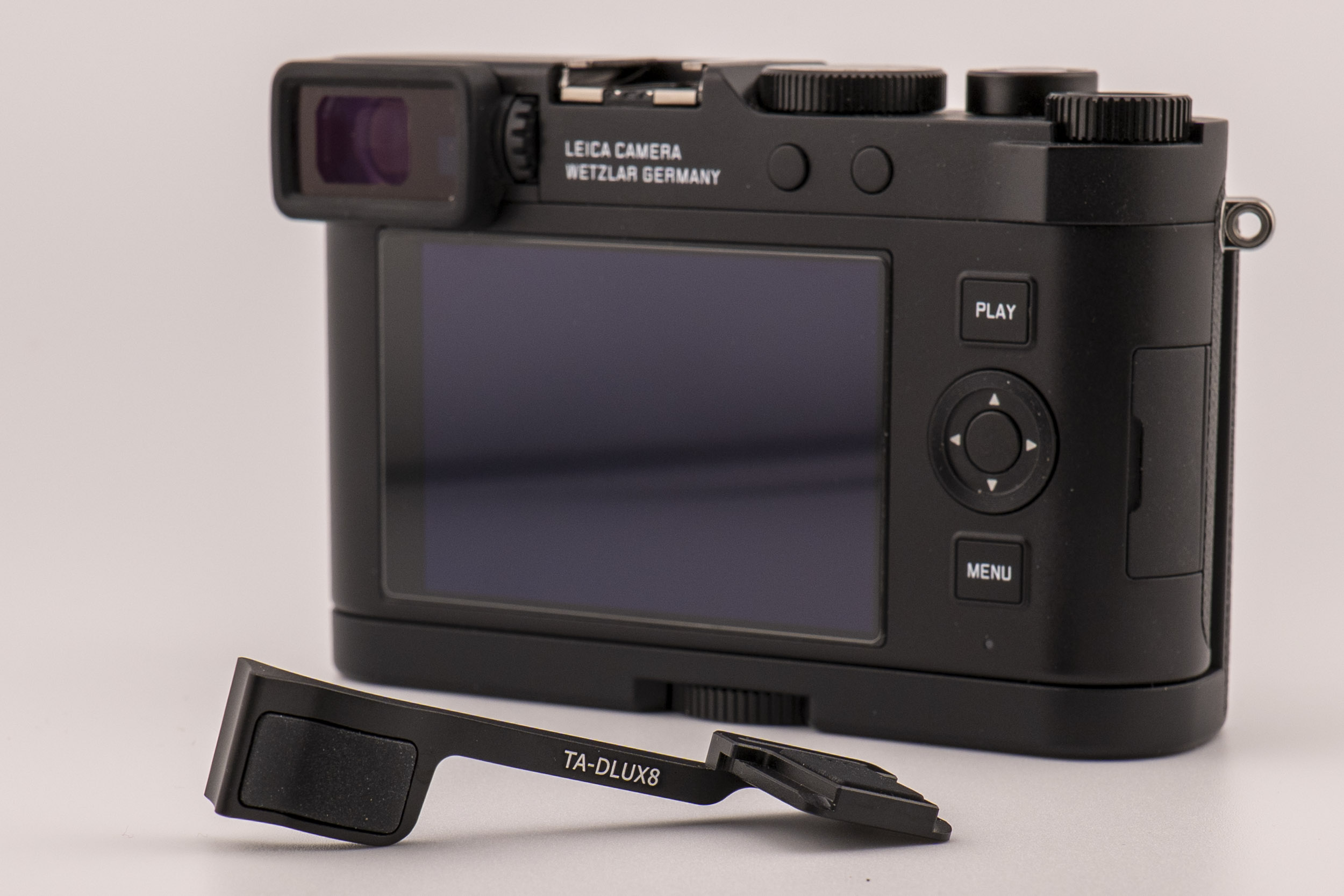
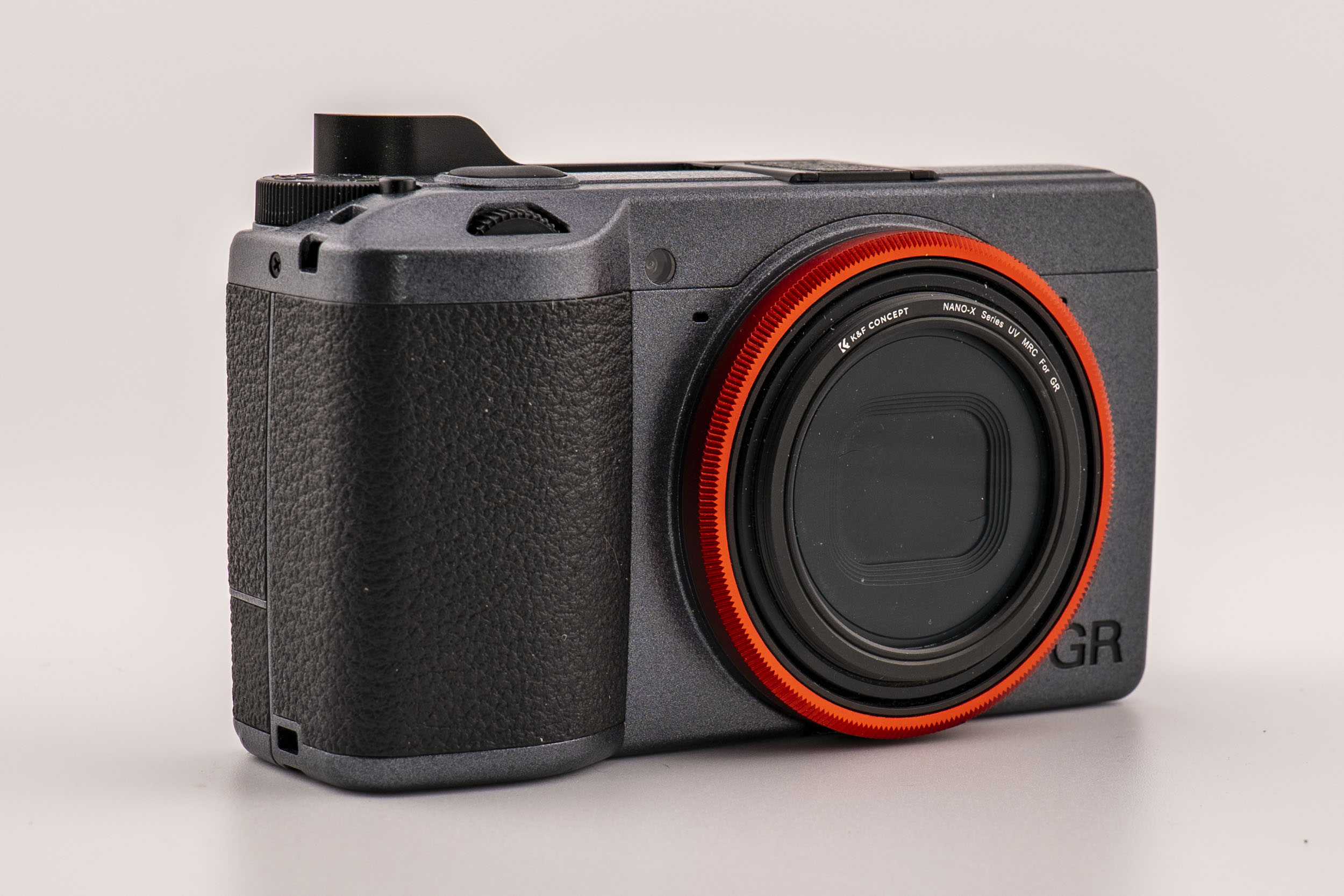
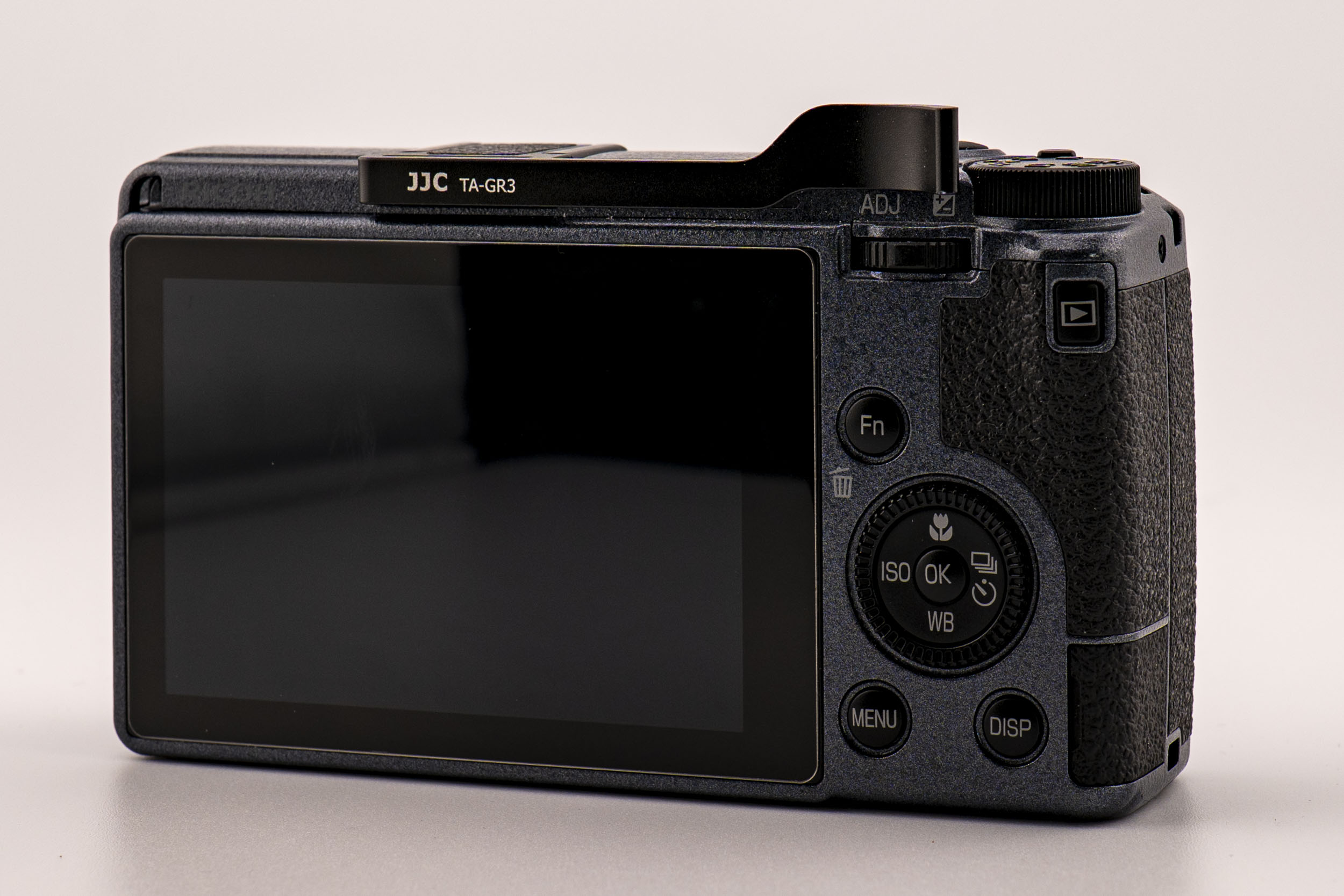
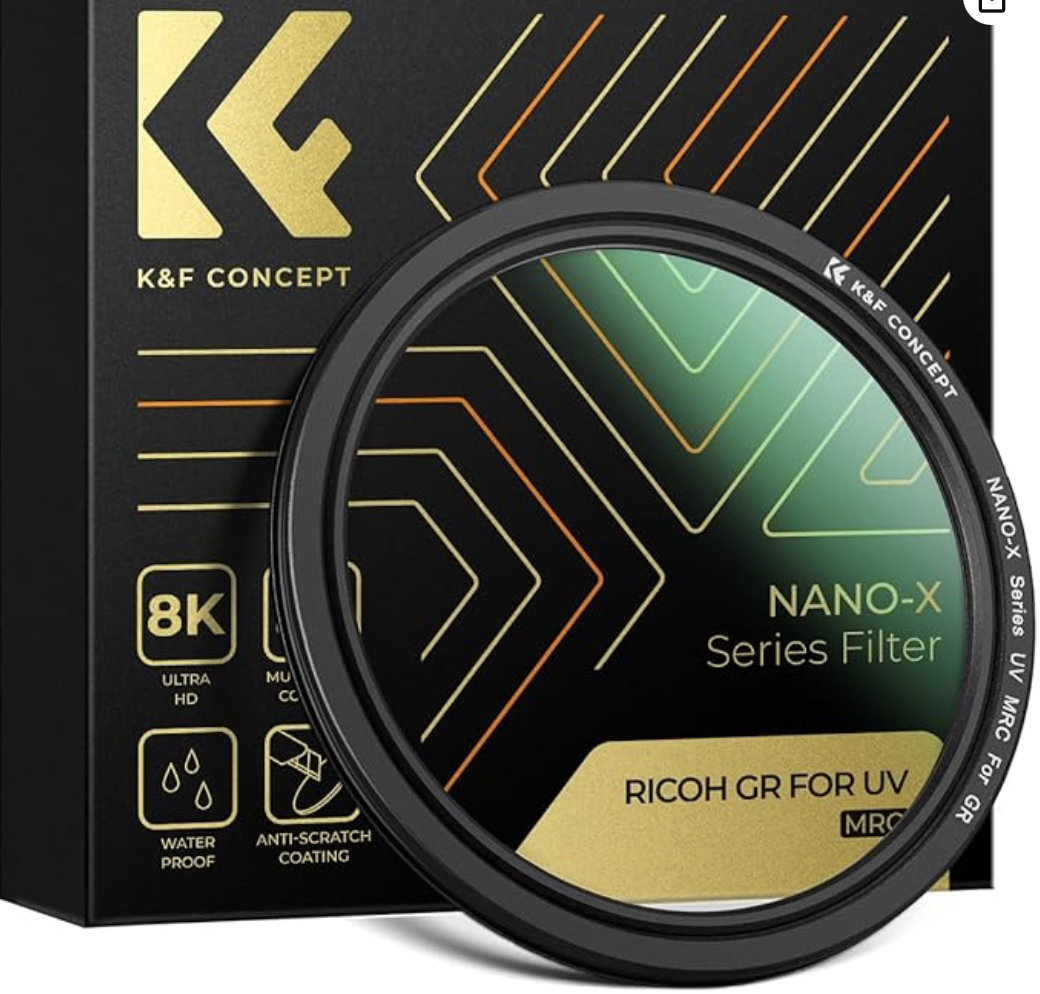
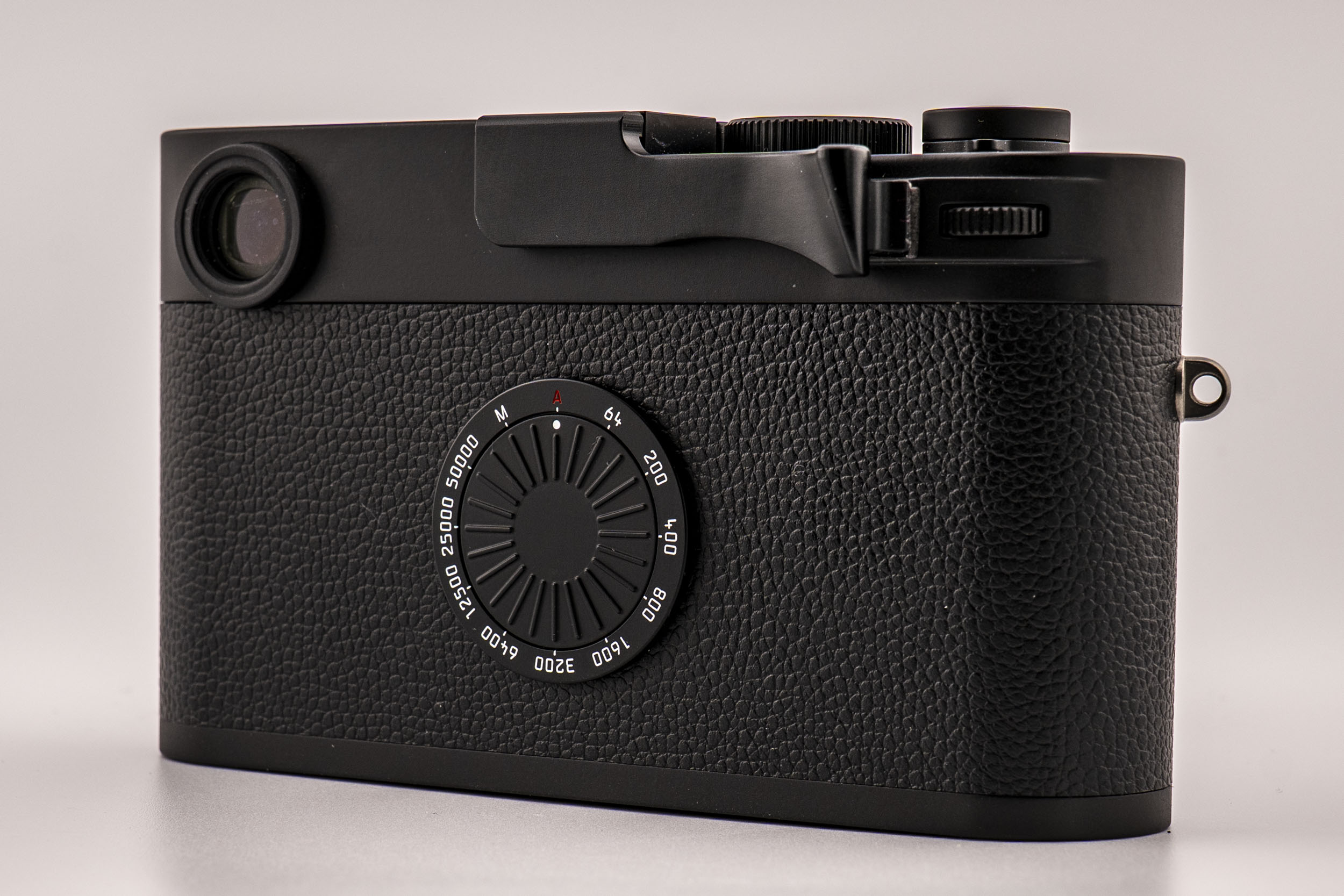
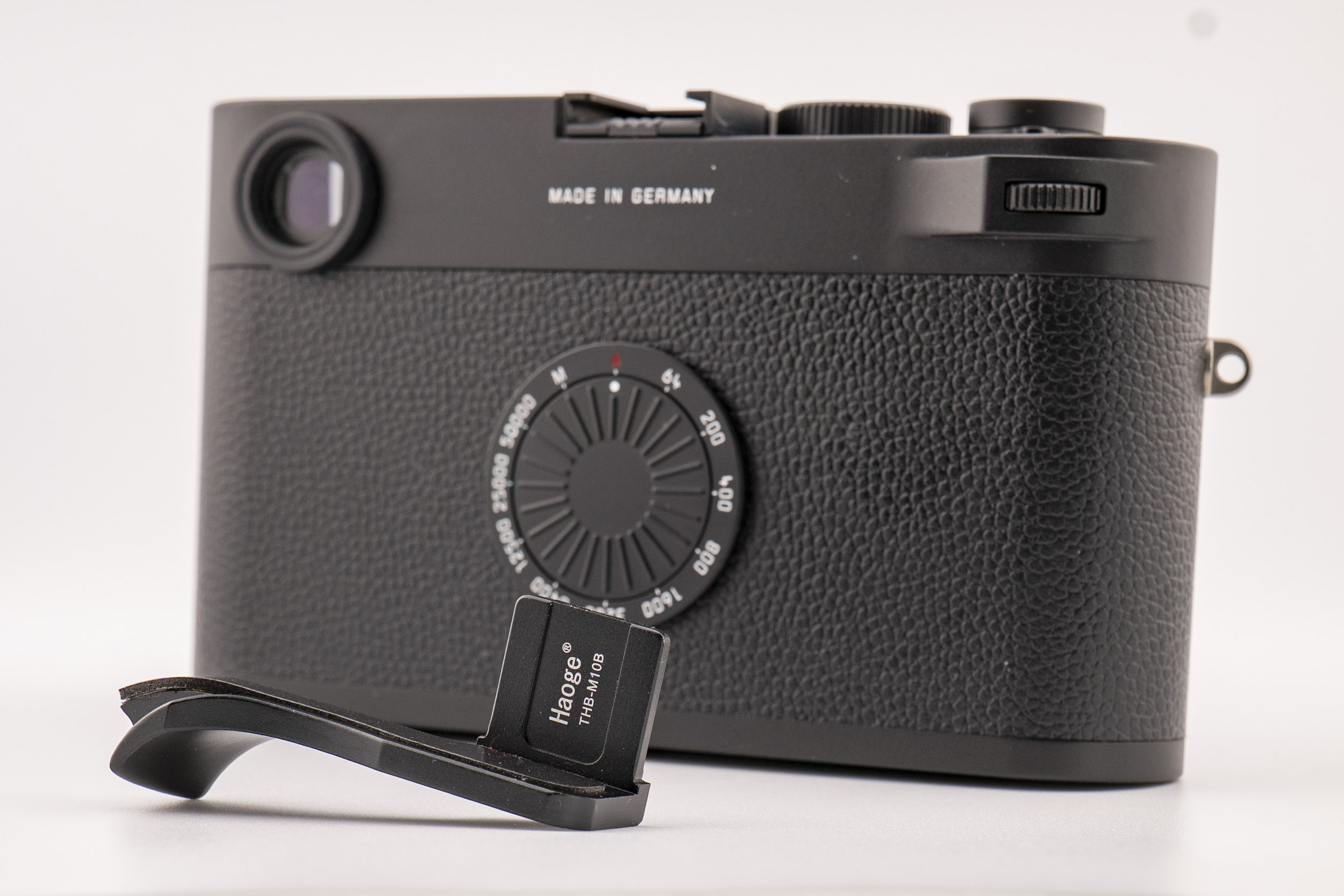
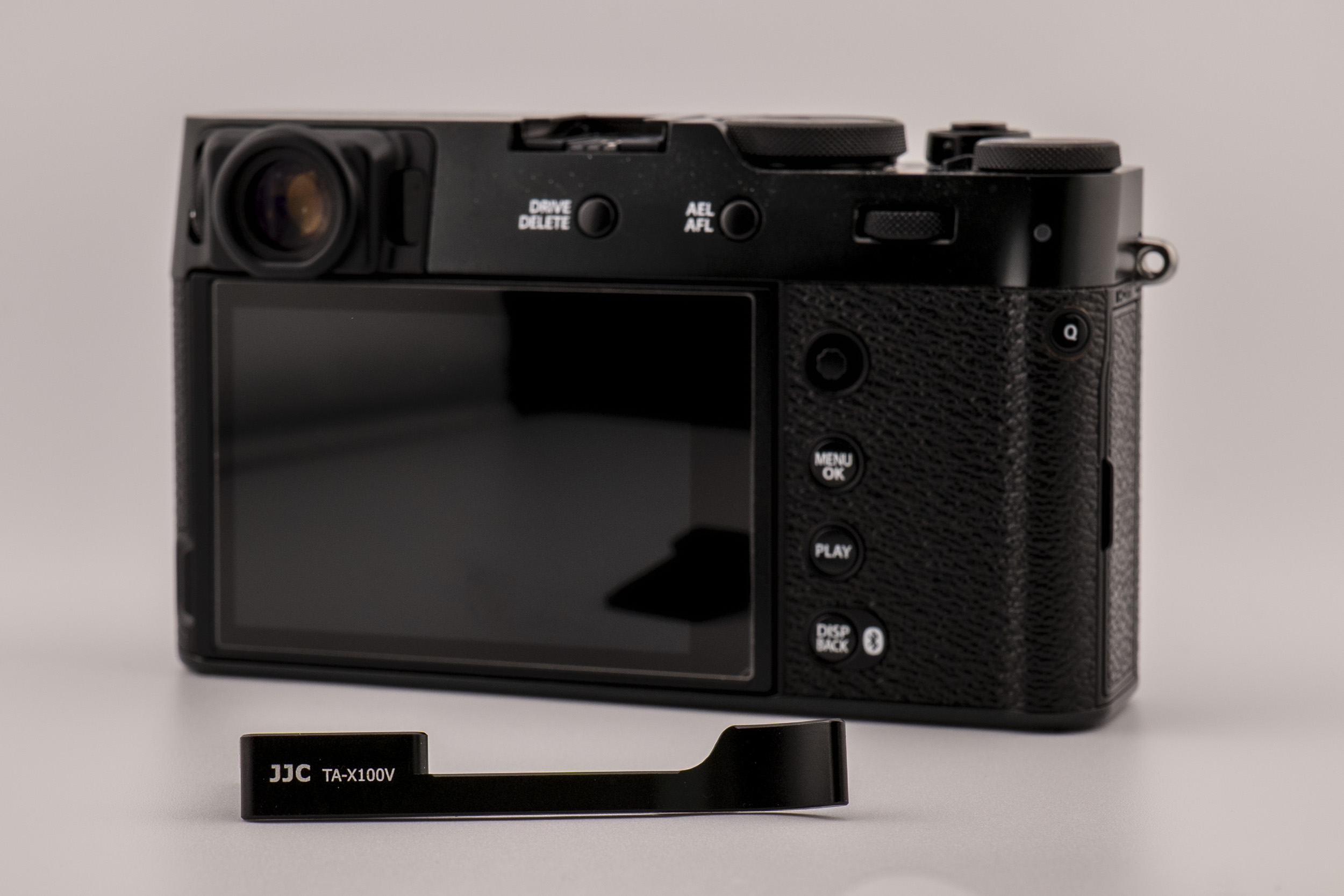
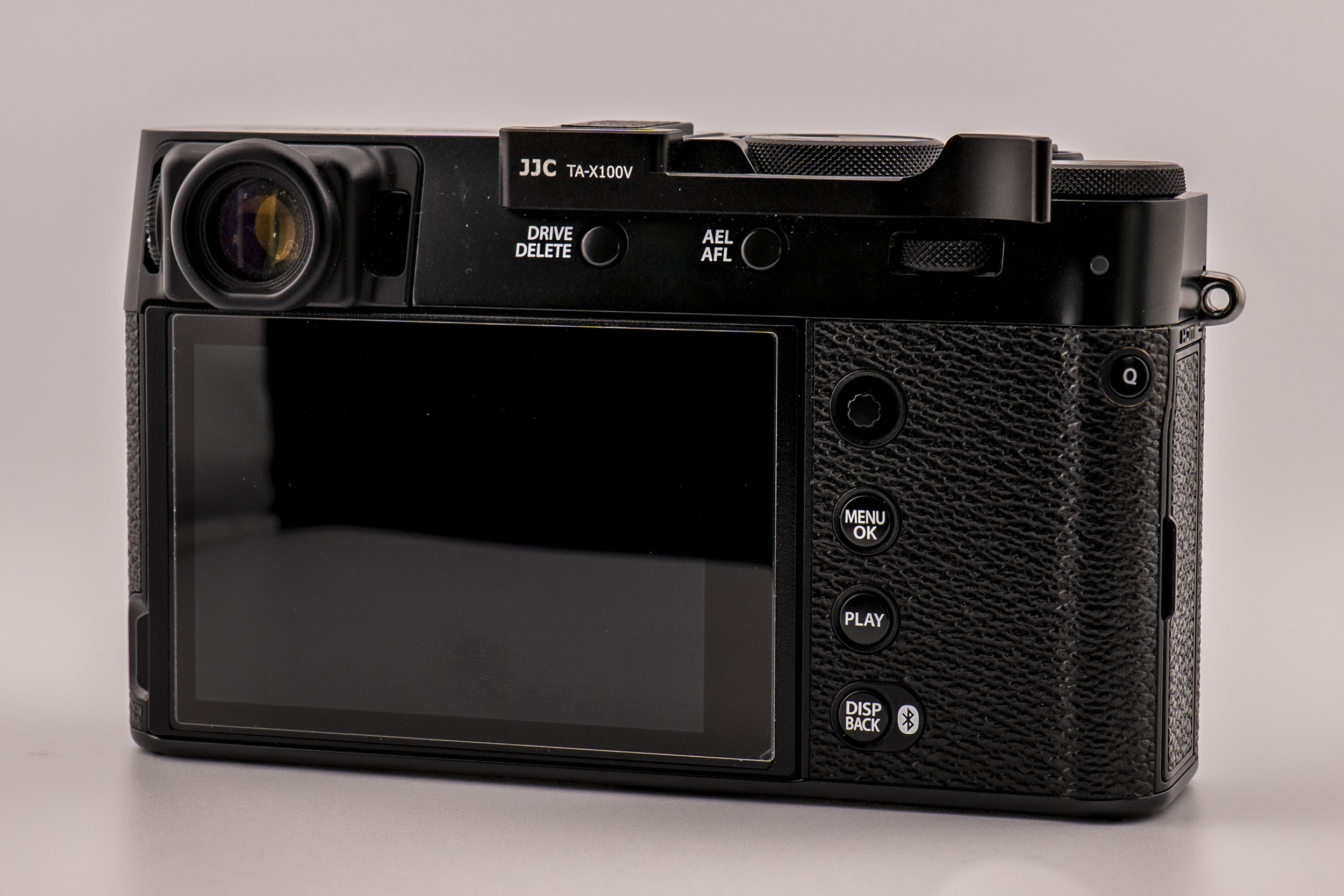
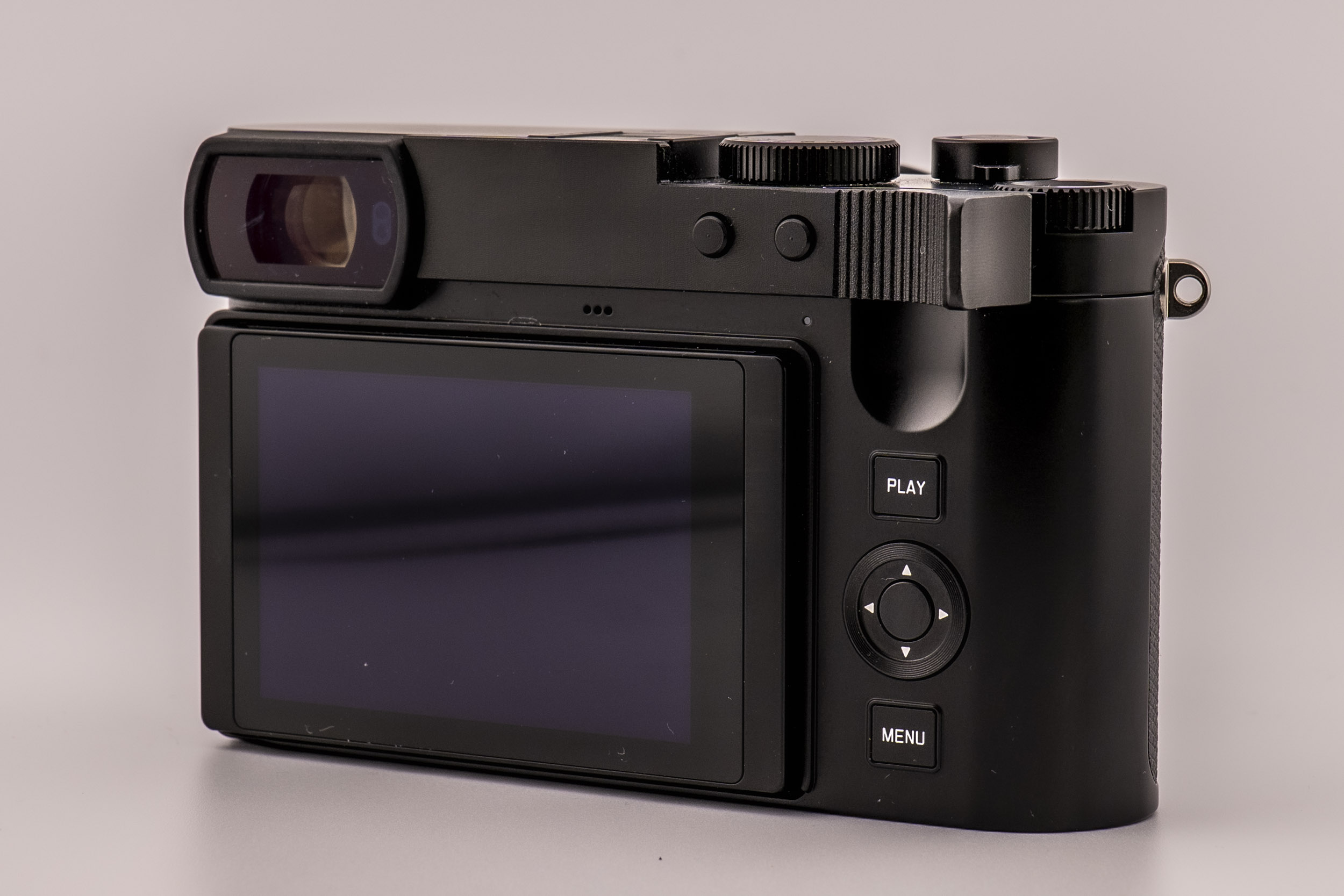

Sorry about the double posting. Hadn’t realised new comments could appear at the top.
I now have, from Amazon, the nameless but apparently identical grip to Haoge. It looks like it’s the same quality that Mike reviewed. Price was a fiver lower than the Haoge, but I didn’t get the screen protectors. Seems well made and perfectly satisfactory. If anyone in the UK wants the JJC one in perfect nick for twenty quid, let me know!
Confirming I bought and have now received a no-name thumb grip for the Q3, from Amazon. It appears identical to the Haoge that Mike liked, cost about a fiver less, but doesn’t include screen protectors.
Can’t have everything!
You will have to let us know what you think of the new camera, with some samples!
I use a “Thumbie” from a UK dealer on my M240 and it’s excellent. It doesn’t use the visited coupling on the top.
JJC and Haoge hoods are great. Excellent quality and price. 👍🏻👍🏻👍🏻
Have several of them.
I recently purchased a handgrip for my Leica Q3 43. I was sorely tempted by Helium Design Lab version but at A$740 (US$475) plus postage I just couldn’t justify it even against the Leica charging grip at A$410. I ended up with the Smallrig version at $165. It’s very well designed and manufactured and has the little indented section on the inside of the grip for your finger tips much like the handgrip on the SL3. It gives full access to the battery and SD card without removing the grip and has an integral Arca Swiss plate on the bottom.
Thanks, Tom. Another useful tip.
I use the JJC hood on my LX100 (the original version). It’s primarily for protection – I doubt if it shades much at the longer end of the lens – and I think it’s a very worthwhile, and cheap, addition.
Here in Australia the genuine Leica soft shutter release button for the Q3 retails at a ridiculous A$140-(£70).
This is for a very short thread with a soft plastic cap which comes in a small velvet bag with Leica written on it inside a silver and black box.
I recently purchase a new, apparently identical, non original item from an ebay seller for A$5 (£2.50} The postage was A$2. It came in a small plastic bag in an envelope. Sadly no velvet bag and little silver and black box for me.
Some of the K@F gear is decent, I use their filters and recently bought their CPL kit for my new Fuji, and I’m about to pick up their magnetic ND filter kit before I go back to North Yorkshire for my next coastal break.
It all works as it says on the box, unlike my brain which has spent a month learning Fujinese, camera is amazing, working out what they named stuff, why, and then what it actually does when you adjust settings, is something else entirely.
D
I use for my Leica D Lux 8 and Leica x2 a hood wich opens and closes as tulip automatic when ich the Camera start or stop.
I remember the price was under 30 €
I tried one of these on previous versions of the D-Lux but I dint like the appearance. I know it is very popular,, particularly in protecting the lens.
Indeed I found the grip for the M11 being quite heavy, the relief through better grip wasn’t compensated due to more weight, even using the tele-elmar 135.
The foldable thumb grip from IDSWorks is very cleverly engineered it folds away when not in use, which means in doesnt graze your chest
We have covered the IDSworks foldable grip in an early article and I should have inserted a link in this article. You can search for it on Macfilos.
I have purchased both Haoge and JJC hoods and found both the quality and fit excellent, including the bayonet mount on Zeiss and Voigtlander.
JJC for Ricoh GRIII is good 👍🏻
Tried both Haoge and JCC thumb supports (as well as Thumbs Up’s one) on my Leica Q2 and M11-D. Unfortunately, all three are inferior in quality compared to Leica’s. They are either too tight or too loose in the hot shoe. Also, the placement of the thumb support itself is closer to the center of the camera than Leica’s own.
Thumbs Up model for my M9m in brass is the only one that I’m satisfied with.
This is strange. I have been satisfied with all of these examples. I have not used the Leica Q3 grip, however, so can it make a direct comparison.
Caveat emptor. The link to the Q3 thumb grip now takes one to an inferior product, a completely different design to the one Mike Evans reviewed, and more like the JCC one which I have but don’t like so much. After a bit of detective work, I found the identical grip claiming a different manufacturer, but I’m sure it’s the same thing:-
https://www.amazon.co.uk/Leica-Camera-Support-Aluminum-Handgrip/dp/B0DNDT1YJ9?source=ps-sl-shoppingads-lpcontext&ref_=fplfs&psc=1&smid=A2KVF7QXNCLV8H
It’s handily a few quid cheaper, and I’m tempted.
Incidentally, if the powers that be at Macfilos are reading this, I’ve been trying to donate a few quid to you via the buttons, but keep getting a message back that you’re not currently accepting donations.
Dear Paul,
Many thanks for the added information. We will check that link and correct it if necessary. Not sure how that happened. I did notice, however, that other companies are offering a similar grip.
Thanks also for mentioning the donation problem. Again, we will investigate this.
Thanks for your support,
Mike
Any update, Mike? I’d still like to chuck you a few quid!
Dear Paul,
For other readers’ benefit, this concerns the current outage of our donation system. Would-be donators are receiving an error message to the effect that “Macfilos cannot accept donations at this time”.
The reason appears to be that PayPal changed its rules without telling us. Because we are not a registered charity, we cannot accept donations. I have been round the world several times (judging by all the different accents) with PayPal without resolving the issue. We have two options: 1) to create a “Pool” which is similar to Just Giving and has limited duration; 2) convert our little account to a business account. While this will work, the fees go up.
As it happens, Paul, we are discussing this currently and trying to come to an agreement among ourselves. The odd thing is that standing order payments, where some very kind readers make a monthly donation, are still coming in because they were originated before the rule change.
We hope to have this resolved soon, probably by choosing to go down the business route. We will publish a short article to explain the situation in due course.
Many thanks, Paul.
Mike